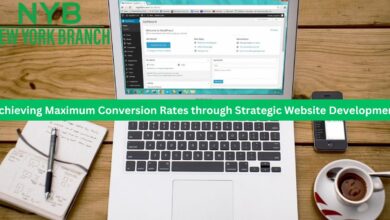Harnessing the Power of the Sun: A Guide to Solar Panel Installation

As the global community grapples with the pressing need to transition to sustainable energy sources, harnessing the power of the sun through solar panel installation has emerged as a prominent solution. Solar energy is abundant, clean, and renewable, making it a key player in the fight against climate change. This guide aims to demystify the process of solar panel installation, empowering individuals and businesses to tap into the sun’s potential and contribute to a more sustainable future.
Understanding Solar Energy:
Solar panel installation begins with a site assessment to identify the best location for maximum sunlight exposure. The roof is prepared with mounting racks, and solar panels are securely attached with attention to spacing and compliance with codes. Inverters are installed to convert DC to AC, and electrical wiring connects the panels to the main system. Often, a grid connection allows excess energy to be fed back. After inspections and approvals, the system is ready to generate sustainable energy, requiring occasional maintenance and monitoring for optimal performance.
Site Assessment Solar Panel Installation:
The success of a solar panel installation project begins with a comprehensive site assessment. Factors such as sunlight exposure, shading, roof conditions, and local regulations play a crucial role in determining the feasibility and efficiency of solar energy production. A professional solar installer will conduct a thorough analysis to identify the optimal location for panel placement, ensuring maximum sunlight exposure throughout the day.
Roof Suitability:
Solar panels are typically solar panel installation installed on rooftops due to their elevated position, providing unobstructed access to sunlight. Before proceeding with installation, it’s essential to assess the structural integrity and orientation of the roof. Ideally, a south-facing orientation is preferred for maximum sunlight absorption. Additionally, the roof should be in good condition, as solar panels have a long lifespan, and any necessary repairs or replacements should be addressed before installation.
Energy Needs Assessment:
To determine the appropriate size and capacity of the solar panel system, a thorough assessment of the energy needs of the property is essential. This involves analyzing historical energy consumption data, considering future growth or changes in energy usage, and accounting for seasonal variations. By understanding the energy requirements, homeowners and businesses can tailor their solar panel systems to meet their specific needs, optimizing both cost and performance.
Choosing the Right Solar Panels:
The market offers a variety of solar panel installation with different efficiency levels, sizes, and costs. High-efficiency panels may be more expensive but can generate more electricity in limited space. Conversely, budget-friendly options may be suitable for larger installations where space is not a constraint. It’s crucial to strike a balance between upfront costs and long-term efficiency to ensure the best return on investment.
Incentives and Financing:
Many governments and local authorities offer incentives, rebates, and tax credits to encourage solar adoption. It’s essential to research and take advantage of these opportunities to offset installation costs and accelerate the payback period. Additionally, various financing options, such as solar loans and leasing agreements, make it easier for individuals and businesses to invest in solar energy without a significant upfront financial burden.
Installation Process:
Once all the preliminary assessments are complete and the necessary components are selected, the actual installation process can commence. Solar panel installation typically involves the following steps:
Roof Preparation:
Before installing solar panels, the roof is prepared by securing mounting racks or brackets. These structures provide a stable foundation for the panels and ensure proper alignment for optimal sunlight exposure.
Panel Installation:
Solar panels are then securely attached to the mounting racks. Careful attention is paid to the spacing between panels to maximize energy production while adhering to local building codes.
Inverter Installation:
Inverters, which convert DC electricity generated by the solar panels into AC electricity, are installed either on the roof or near the main electrical panel. The type of inverter (string inverters, microinverters, or power optimizers) depends on the specific requirements of the system.
Electrical Wiring:
Wiring connects the solar panels to the inverters and the electrical panel, enabling the flow of electricity throughout the property. Proper wiring is crucial to ensure the safety and efficiency of the solar panel system.
Connection to the Grid:
In many cases, solar panel systems are connected to the electrical grid. This allows excess electricity generated by the panels to be fed back into the grid, often resulting in compensation or credits from the utility company.
Final Inspections and Approvals:
After installation is complete, the system undergoes a series of inspections to ensure compliance with local regulations and safety standards. Once approved, the solar panel system is ready to generate clean and sustainable energy.
Maintenance and Monitoring:
While solar panels are relatively low-maintenance, regular monitoring and occasional checks are necessary to ensure optimal performance. Cleaning panels from dust or debris, inspecting wiring for wear and tear, and keeping an eye on inverter functionality are essential tasks. Many modern solar installations come with monitoring systems that allow homeowners and corporations to track energy production and identify any potential issues promptly.
Conclusion:
Harnessing the power of the sun through solar panel installation is a significant step toward a sustainable and renewable energy future. By understanding the fundamentals of solar energy, conducting thorough site assessments, and choosing the right components, individuals and businesses can seamlessly integrate solar power into their lives. With the support of incentives, financing options, and advancements in technology, solar panel installation has become more accessible than ever. Embracing solar energy not only contributes to environmental conservation but also offers long-term financial benefits and energy independence. As the world continues to prioritize clean energy solutions, solar panels stand out as a beacon of hope for a brighter and greener future.



